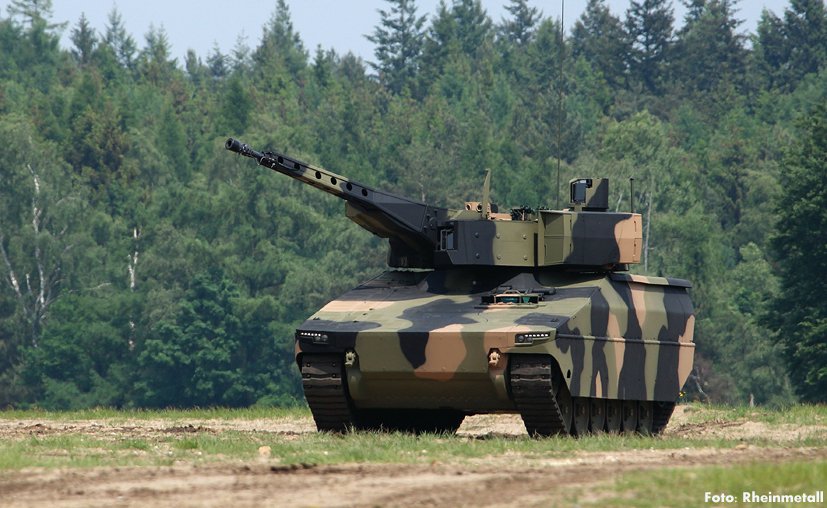Rheinmetall unveils new Lynx Light Armored Infantry Fighting Vehicle at Eurosatory 2016
Posted on
The Rheinmetall Group’s Defence unveils new Lynx Light Armored Infantry Fighting Vehicle at Eurosatory 2016 exhibition.
Lynx features a Rheinmetall LANCE turret armed with a stabilized, externally powered, airburst-capable automatic cannon (either 30mm or 35mm). This enables Lynx to effectively engage targets with high precision at ranges of up to 3,000 metres – even on the move. Lynx can also be equipped with an antitank guided missile launcher and a secondary weapon station linked to the main optics (main sensor slaved armament). Not only does Lynx have hunter-killer capability, it can operate in killer-killer mode, since the commander and gunner can observe and engage targets independently of each other.
Force protection
With the diesel engine mounted in the forward section and a modular armour concept, the vehicle architecture offers a high degree of protection. The vehicle’s ballistic armour shields Lynx from antitank weapons, medium-calibre ammunition, artillery shrapnel, IEDs and bomblets. In addition, a spall liner in the vehicle interior protects the entire crew. Mine and IED protection packages, decoupled seats and the optional hard kill Active Defence System (ADS) significantly boost the vehicle’s survivability.
Situational awareness
The commander and gunner both have access to the Stabilized Electro Optical Sight System/SEOSS, a digital TV – IR optical system with an integrated laser range finder and fire control computer. In the fighting compartment, displays provide the crew with a seamless 360° panoramic view. Rheinmetall’s Situational Awareness System (SAS), featuring automatic target detection and tracking, enhances the hunter-killer capability and minimizes crew reaction time. Emerging threats can be swiftly engaged with Lynx’s main or secondary armament. Laser warning sensors and the Acoustic Sniper Locating System (ASLS) likewise form part of the sensor suite. A combat management system and intercom for tactical communication round out the array of on-board equipment.
Owing to the manned turret, the commander can still lead from the hatch. The gunner and driver each have hatches, too, while two soldiers in the rear of the fighting compartment can also observe the area around the vehicle from an open hatch.
Mobility
Lynx features an excellent power-to-weight ratio and can handle gradients of up to 60 degrees and lateral inclines of more than 30 degrees. It can cross ditches up to 2.5 metres wide and ford bodies of water up to 1.50 metres deep. Furthermore, it can climb over one-metre-high obstacles. The vehicle can run on either rubber or light metal tracks.
Another characteristic of Lynx is its versatility. For example, the new IFV comes in two versions: the KF31 and KF41 (KF stands for “Kettenfahrzeug”, or tracked vehicle in German). Weighing up to 38 tonnes, Lynx KF31 on display at Eurosatory and can seat 3+6 soldiers. Lynx KF41 is slightly larger and can carry 3+8 soldiers. Both vehicle classes – Lynx KF31 and Lynx KF41 – can be configured for other roles include a command & control, an armoured reconnaissance, repair & recovery and an ambulance.
Rheinmetall Group’s Defence sector is regarded in the defense and security industry as a leading provider of innovative products for German and international armed forces, and offers system and partial system solutions and a wide range of services for capability in the areas of mobility, reconnaissance, management, effectiveness and protection.

Subscribe to our newsletter
Promotions, new products and sales. Directly to your inbox.

